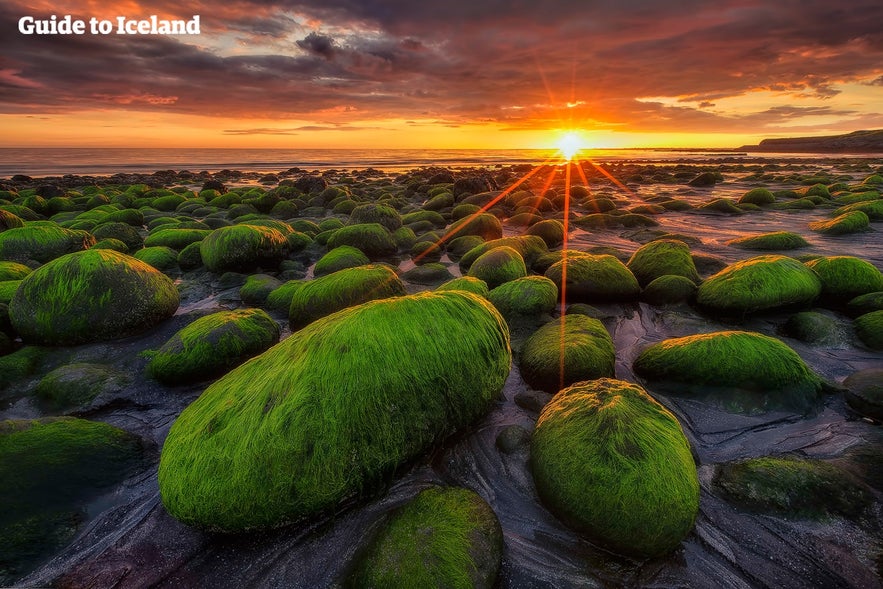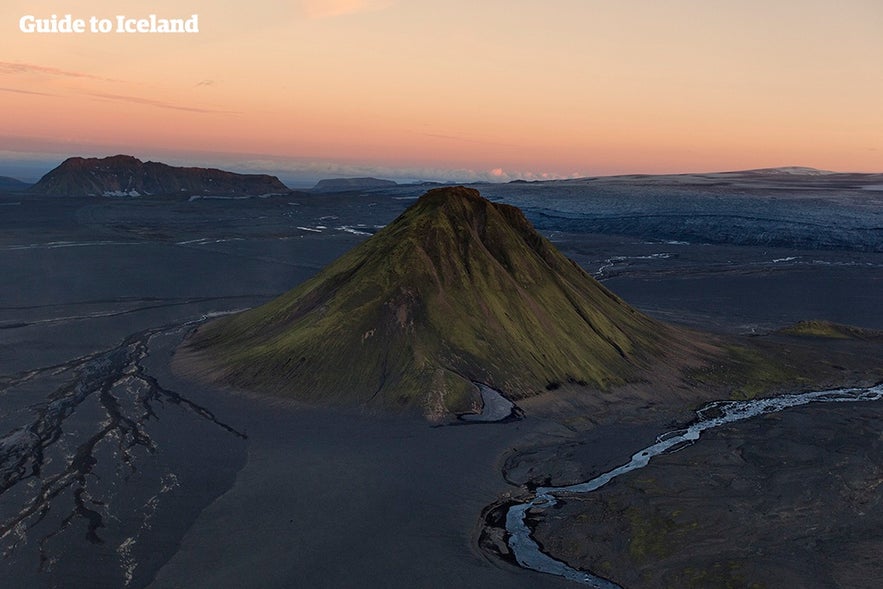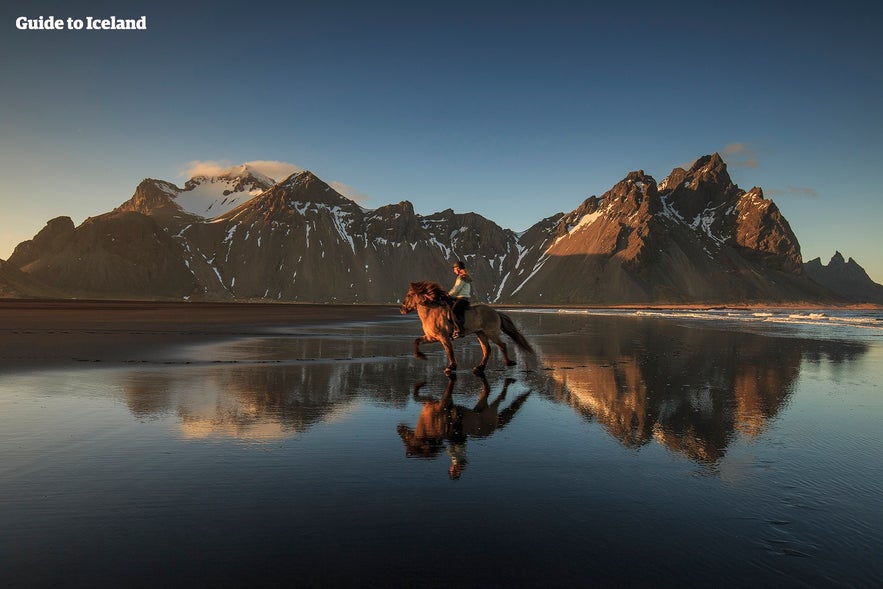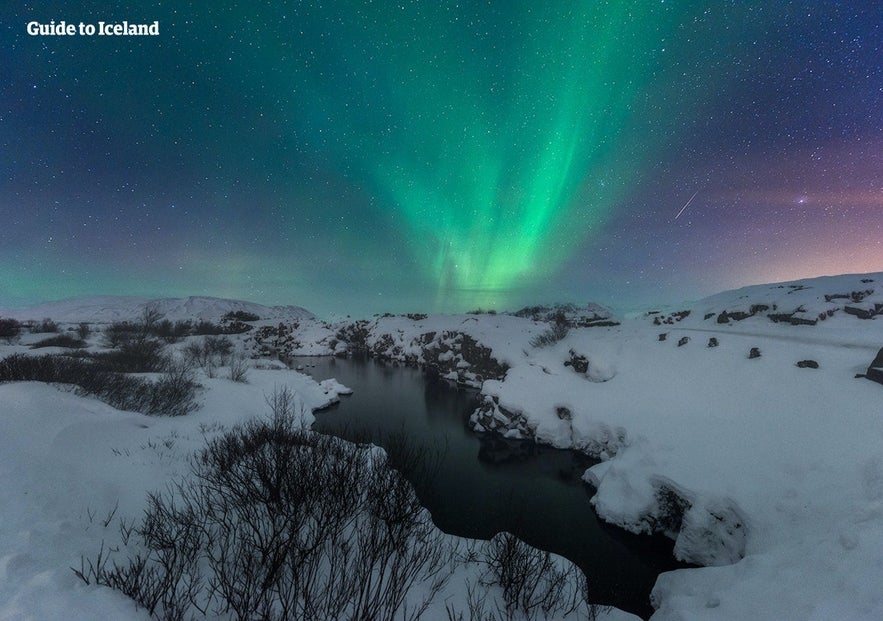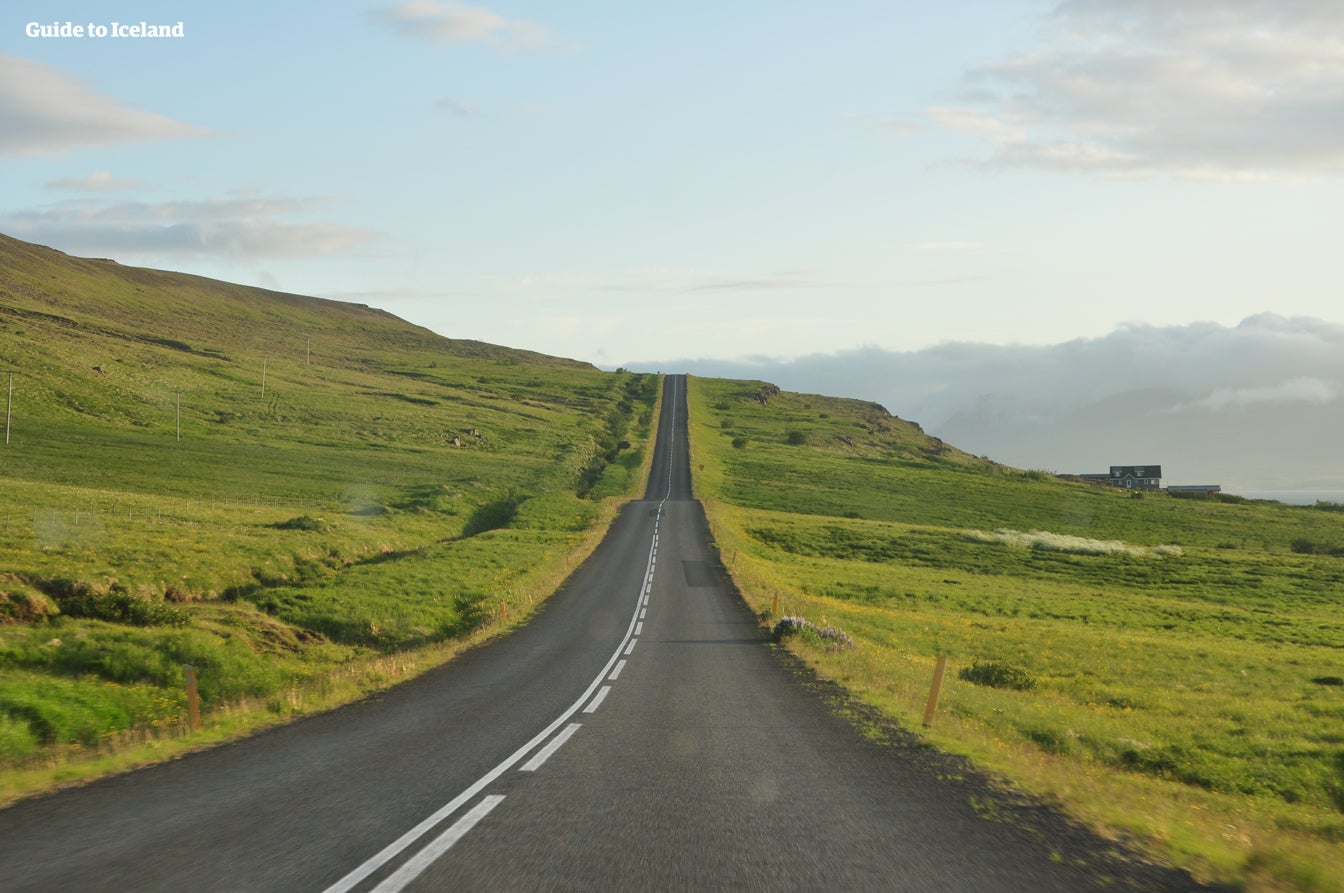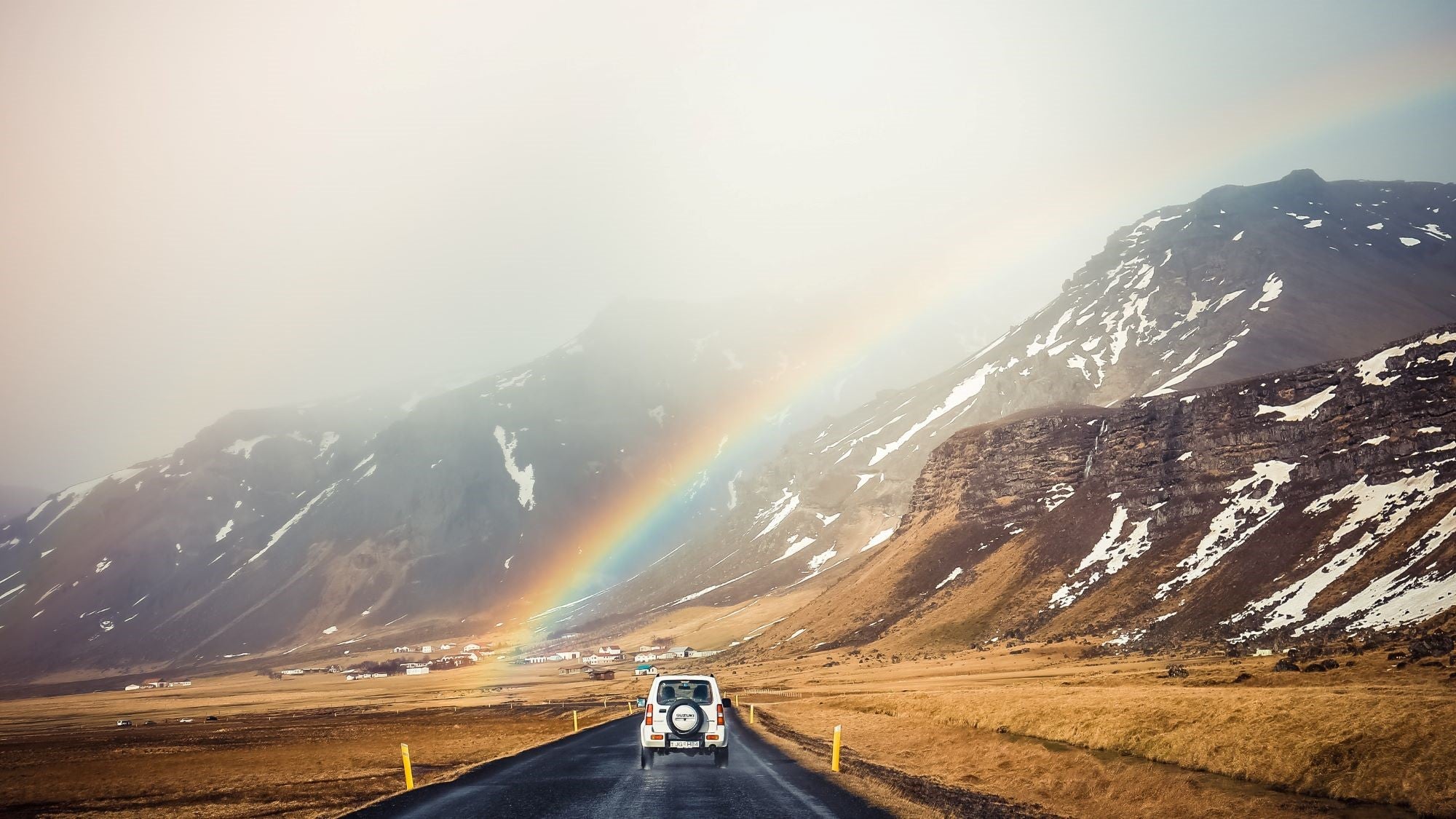
For an isolated island in the North Atlantic Ocean, Iceland attracts an impressive number of travelers from around the globe looking to book a vacation filled with stunning natural beauty, unique outdoor experiences, friendly residents, and rich cultural traditions.
The top tours in Iceland take you beyond the ordinary, from geothermal springs and untouched hiking trails to scenic landscapes and Michelin-starred dining. Every moment immerses you in the country's otherworldly beauty and rich cultural heritage, whether you're taking guided tours or embarking on self-drive adventures. Read on for the top reasons why you should visit Iceland.
Why You Can Trust Our Content
Guide to Iceland is the most trusted travel platform in Iceland, helping millions of visitors each year. All our content is written and reviewed by local experts who are deeply familiar with Iceland. You can count on us for accurate, up-to-date, and trustworthy travel advice.
Key Takeaways
-
Natural Wonders: Iceland has a variety of natural attractions, including the midnight sun, northern lights, glaciers, volcanoes, waterfalls, and geothermal springs.
-
Adventure Opportunities: With glacier hiking, ice caving, whale watching, diving, snowmobiling, and 4x4 exploration, Iceland is an adventurer’s paradise.
-
Unique Culture: Iceland’s geographic isolation, rich Norse history, and Michelin-starred cuisine make it a singular experience.
-
Road Trip Paradise: The Ring Road, Golden Circle, and Diamond Circle provide stunning, easy-to-navigate road trips to visitors who want to make their own way.
Before You Go to Iceland: Choose Your Season
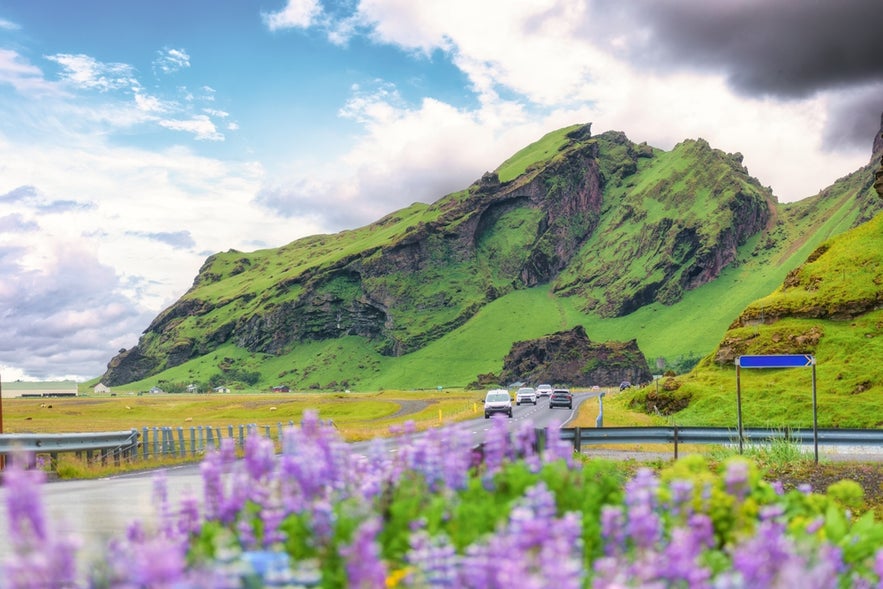 Choose your own adventure: Iceland transforms dramatically between seasons, offering two distinct travel experiences.
Choose your own adventure: Iceland transforms dramatically between seasons, offering two distinct travel experiences.
-
Summer trips to Iceland feature nearly 24 hours of daylight, lush green landscapes, and mild weather, providing ideal conditions for road trips, hiking, and exploring Iceland’s iconic attractions. Rivers swell, waterfalls roar, and wildlife such as puffins thrive during this season.
-
Travel to Iceland in winter to see snow-covered landscapes, icy terrains, and the magical northern lights set the scene for activities like ice caving, glacier hiking, and aurora hunting. Winter also provides a quieter, more mystical experience of Iceland’s natural beauty.
Top 15 Reasons to Visit Iceland
 No matter when you decide to travel, our top 15 reasons to visit Iceland will have you packing your bags. These are the unmissable experiences you can have in Iceland.
No matter when you decide to travel, our top 15 reasons to visit Iceland will have you packing your bags. These are the unmissable experiences you can have in Iceland.
15. Marvel at the Summer Midnight Sun
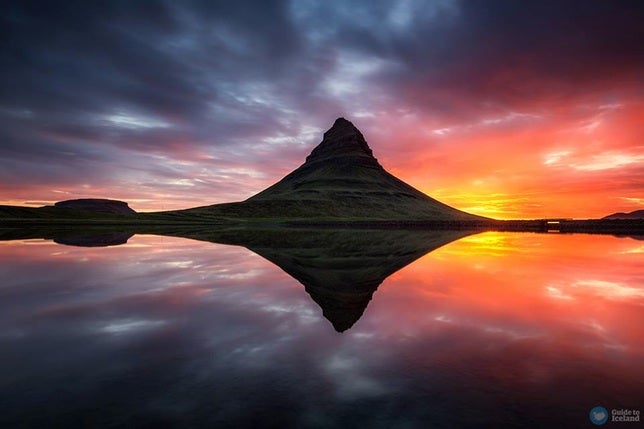
The highlight of the summer is the summer solstice that occurs between June 20 and 22. On that night, Iceland’s ethereal crown jewel sets just after midnight, only to rise again just before 3 AM.
Seeing the sun refuse to set for the first time is an unforgettable experience. The endless days offer an incredible advantage for a tireless traveler keen to see as much of Iceland as possible.
Long days are ideal for long hikes, while sightseeing late at night allows you to see Iceland's strange landscapes from an unmatched perspective. Before you visit, explore the top things to do and must-visit places in Iceland so you don't miss anything.
Plus, there are several dedicated midnight sun tours in Iceland to choose from. Some of the top midnight sun tours are:
14. Chase the Winter Northern Lights

Iceland's location at the top of the world makes it one of the best places to see the northern lights. These spectacular wonders are commonly seen from September to mid-April and are among the top reasons to visit Iceland outside of the bright summer months.
On a still winter night, you have a good chance of seeing the aurora borealis dance in the sky above Iceland’s capital, Reykjavik, but heading out of town and away from the city's light pollution is a better bet.
Another excellent way to increase your odds of seeing this magical phenomenon is by joining some of the most popular northern lights tours in Iceland.
These tours are led by experienced guides who specialize in northern lights hunting so you can spend less time worrying about your view, and more time taking it in. Seeking the best nightly sightings and going northern lights hunting can be equally thrilling as seeing the spectacular celestial show itself.
If you’re staying in Reykjavik, these are some of the best places to see the northern lights.
Or rent an affordable car from Iceland's largest travel marketplace and embark on a journey at your own pace. Rental cars are a popular option in Iceland since most visitors want to explore the landscape. If you go without a guide, be sure to check the aurora forecast and the cloud cover for the best results.
The solar maximum, which makes for the best aurora-viewing experience, is expected to occur through 2025. While the northern lights are beautiful in non-maximum times, the more dramatic auroras are unforgettable.
13. Witness Amazing Icelandic Wildlife
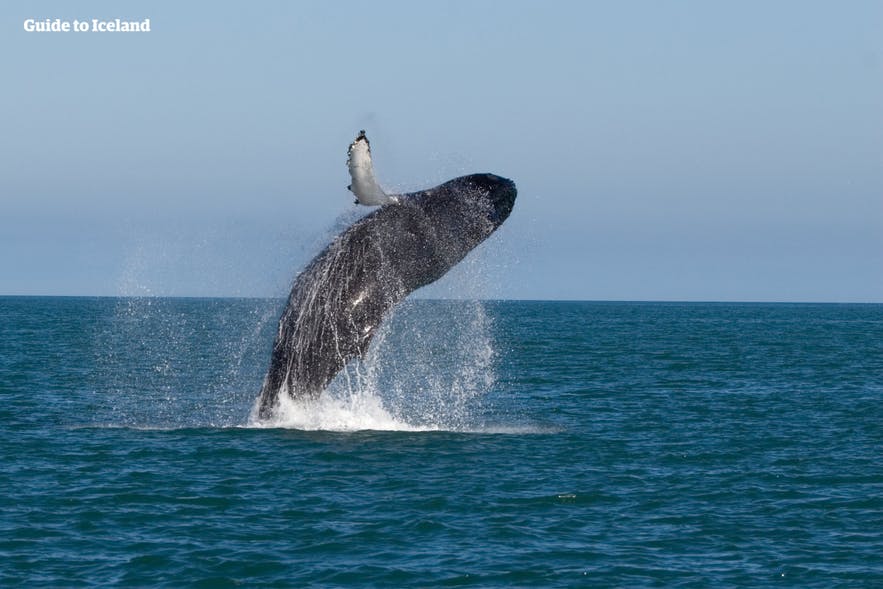 Iceland has steadily grown to become Europe's whale-watching capital, and for good reason: the ocean around Iceland provides ideal living conditions for over 20 species of whales. This is why whale watching in Iceland is one of the top reasons to visit.
Iceland has steadily grown to become Europe's whale-watching capital, and for good reason: the ocean around Iceland provides ideal living conditions for over 20 species of whales. This is why whale watching in Iceland is one of the top reasons to visit.
On a whale-watching trip from Reykjavik, you can count on seeing minke whales, whale-beaked dolphins, or harbor porpoises.
On a Husavik traditional whale-watching trip in North Iceland, you will very likely spot the gigantic humpback whale.
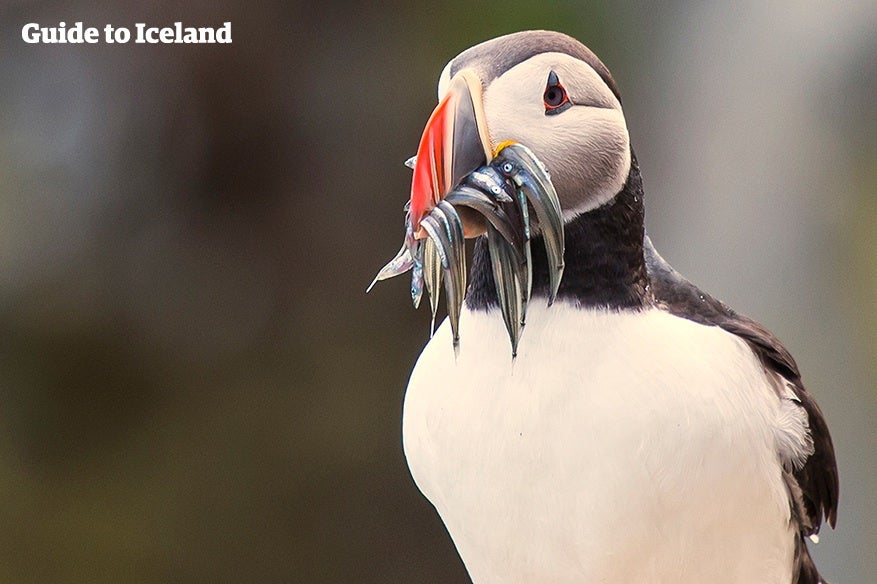
A face-to-face encounter with the Icelandic whales in their natural habitat is an experience beyond comparison. If you’re wondering where to find puffins, many whale tours include the busy seaside cliffs where Iceland's colorful ambassadors nest in rocky crevices or burrow in the soil.
These beautiful birds are fun to observe on their own, but the puffin colonies are truly a sight to behold in summer. To get the most out of your wildlife-watching trip, consider one of the many whale-watching and puffin tours that fit your itinerary and traveling style. Or check out one of the many bird-watching tours that include puffins.
12. Go on a Thingvellir National Park Adventure
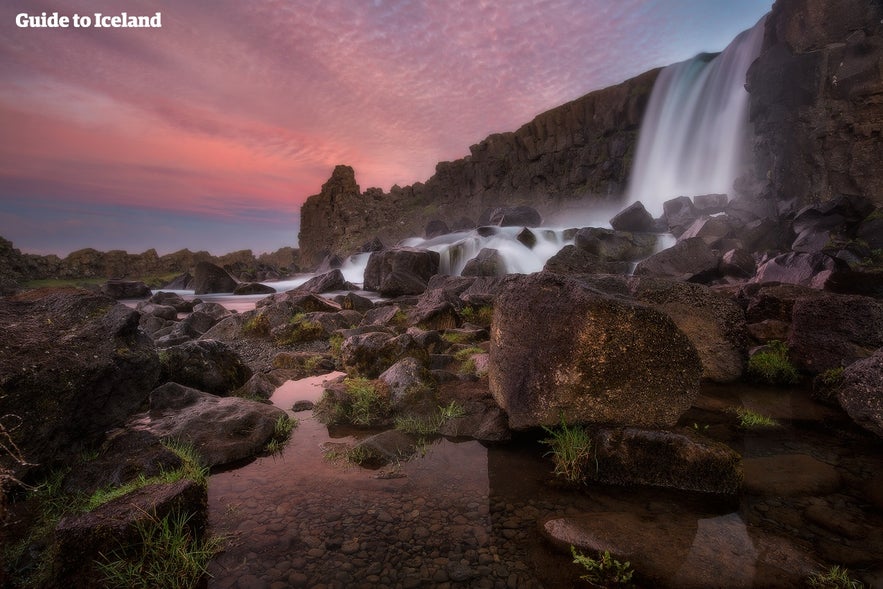
Located only 29 miles (47 kilometers) from Reykjavik, Thingvellir National Park in Southwest Iceland is a must-see destination and one of the top reasons to visit Iceland. Adventurous visitors are attracted to the park’s opportunities for diving tours and guided snorkeling trips along the tectonic plates.
Thingvellir National Park is historically significant for the country. The Icelandic parliament, Althingi, was founded in Thingvellir in the year 930 and held its first sessions by the Almannagja Gorge, the rift valley of the Mid-Atlantic Ridge.
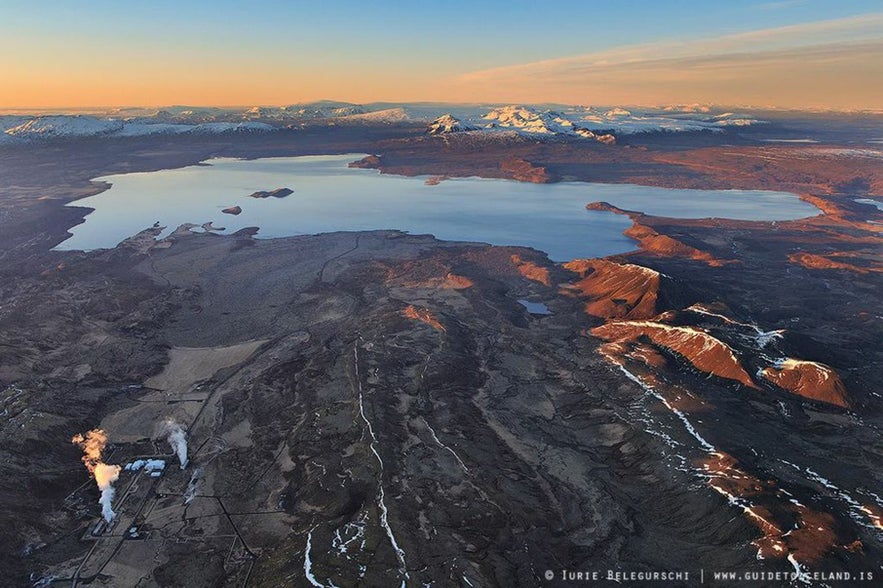 Thingvellir has been declared a UNESCO World Heritage site because of the area's extraordinary natural features, including Thingvallavatn, Iceland's largest natural lake, and the Silfra Fissure, where the North American and Eurasian tectonic plates meet and are slowly drifting apart.
Thingvellir has been declared a UNESCO World Heritage site because of the area's extraordinary natural features, including Thingvallavatn, Iceland's largest natural lake, and the Silfra Fissure, where the North American and Eurasian tectonic plates meet and are slowly drifting apart.
Visiting this geological wonder gives you a once-in-a-lifetime opportunity to dive between the North American and Eurasian tectonic plates in crystal-clear glacial water. The Silfra Snorkeling Tour and a visit to the Thingvellir National Park make planning a breeze.
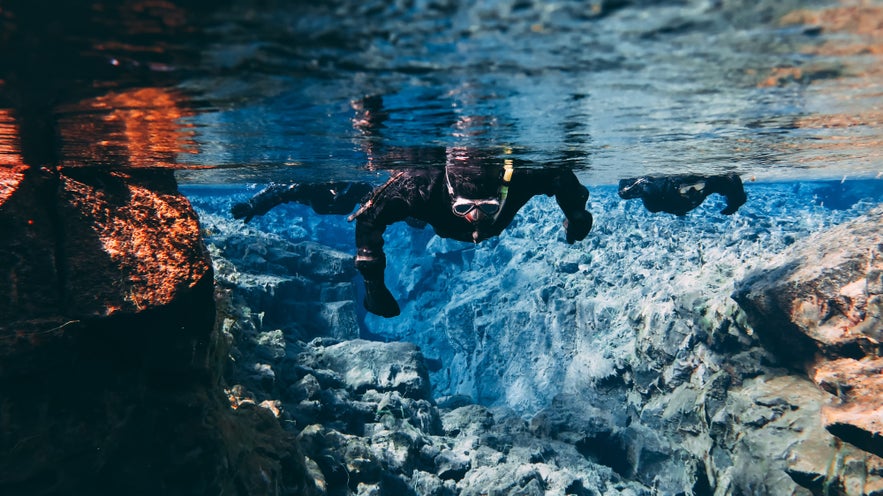 You can also add this experience to one of the top vacation packages in Iceland for a complete, hassle-free adventure.
You can also add this experience to one of the top vacation packages in Iceland for a complete, hassle-free adventure.
11. Hike Stunning Mountains and Trails
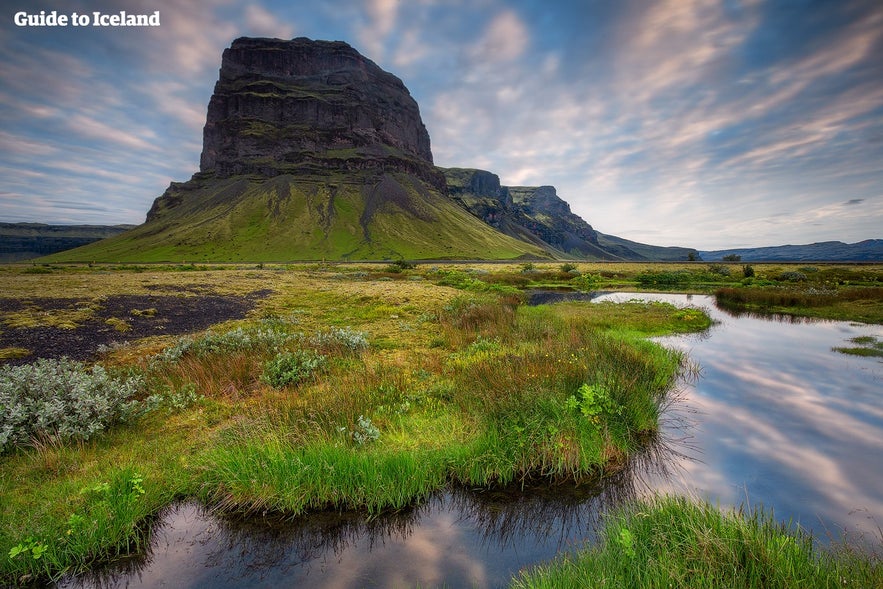
Mt. Esja, just outside of Reykjavik is the most popular mountain to hike. It’s best when followed with some relaxation, like this tour that combines a hike with a dip in the Hvammsvik hot springs. More adventurous visitors can even climb Mt. Esja sheer rock faces.
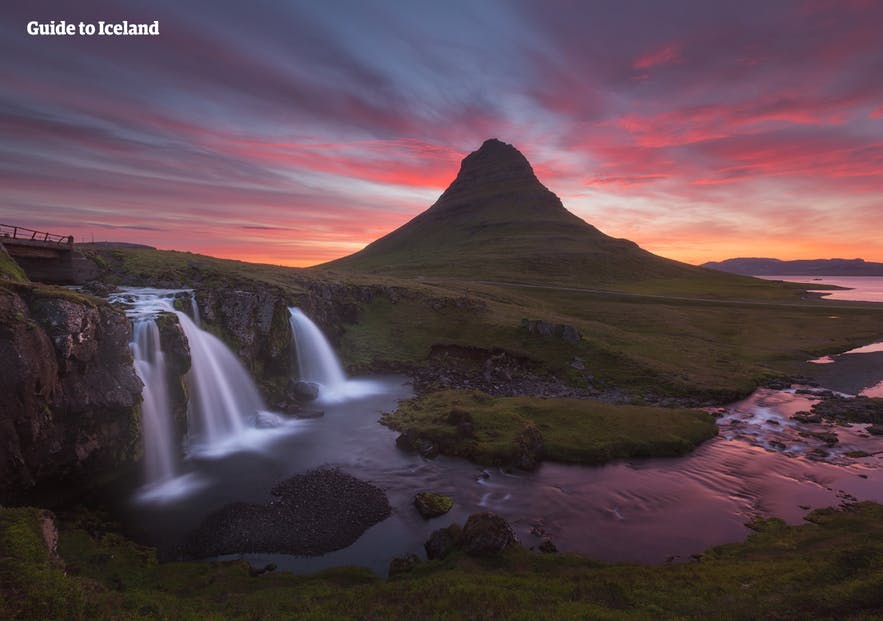 Across the country, guided mountain tours are available for experienced and novice mountaineers alike. Whether you venture to the top for magnificent views or decide to take in the landscape from sea level, you are bound to be amazed.
Across the country, guided mountain tours are available for experienced and novice mountaineers alike. Whether you venture to the top for magnificent views or decide to take in the landscape from sea level, you are bound to be amazed.
10. Experience Iceland’s Glaciers and Ice Caves from Within
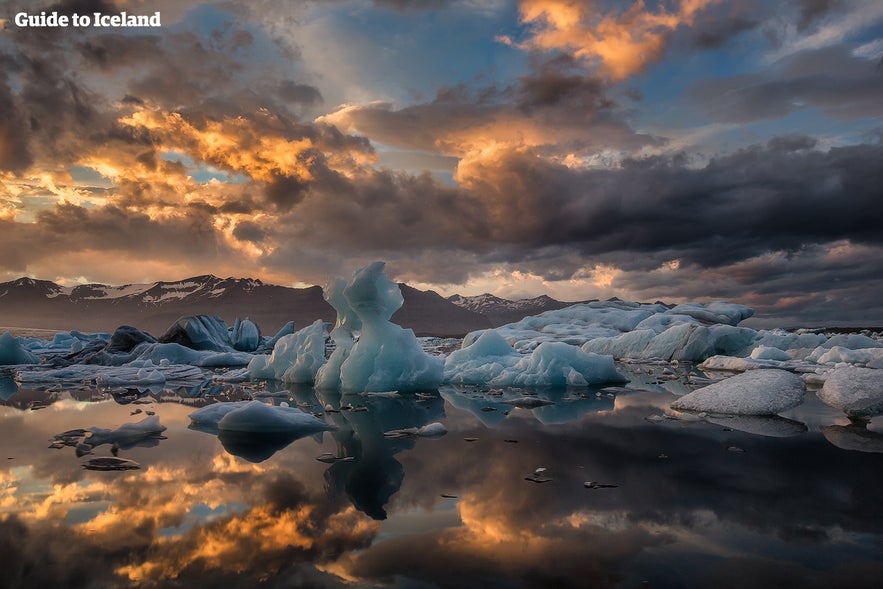
One of the top reasons people go to Iceland is to experience a glacier hiking trip or join one of many guided Icelandic glacier tours.
Glaciers rank among Iceland’s most astonishing attractions. The Jokulsarlon Glacier Lagoon in Southeast Iceland contains gigantic icebergs that have broken off from the tip of the tongue of Breidamerkurjokull Glacier, creating a beautiful landscape of ice and wildlife. You can sail among them on a Jokulsarlon Boat Tour.
Glacier adventuring in Iceland is season-dependent. Jokulsarlon tours are one of Iceland's most popular activities during the summer months. While not exclusively winter activities, visiting in the fall or winter offers a unique opportunity to go glacier hiking. Exploring mesmerizing natural ice caves within Iceland’s glaciers, or ice caving, is available exclusively in winter.
Whether glacier hiking at Skaftafell, exploring a crystal ice cave, or snowmobiling on Langjokull, Iceland’s second-largest glacier near Gullfoss Waterfall, you are guaranteed breathtaking views and a truly unforgettable experience.
9. Relax in Geothermal Baths and Spas

One of the top reasons to visit Iceland is to experience its geothermal and natural hot springs. Iceland's rich water supply is by far its most valuable natural resource. The drinking water quality is exceptional due to its many unspoiled mountain and glacier streams. Iceland also has a long history of using geothermal energy as a power source.
Iceland's geothermal nature provides an abundance of natural pools in unique and picturesque environments. The Blue Lagoon geothermal spa is Iceland's most well-known bathing destination. It often tops the list of things to do for first-time visitors to Iceland.
The lesser-known but equally gorgeous Sky Lagoon near Reykjavik offers thermal pool relaxation with stunning views.
Iceland’s natural hot springs, like the stunning Reykjadalur Hot Springs River, offer a unique way to experience the country’s geothermal wonders. Nestled in the mountains, this warm river invites visitors to relax in its soothing waters, surrounded by breathtaking scenery.
Whether you’re hiking to a hidden pool or soaking under the midnight sun, these hot springs are a perfect blend of adventure and tranquility. Explore the top hot springs experiences in Iceland before you plan your trip.
8. Explore Icelandic Highlands in a 4x4
Covering most of Iceland's interior, the Highlands are home to many of Iceland's most astonishing natural wonders. Generally referred to as "the heart of Iceland," the Highlands are untouched by civilization and accessible only in the summer months.
The Highlands are a top reason people visit Iceland. This vast landscape offers a natural escape like no other in magnificent surroundings.
Here, you can travel for hours without seeing any signs of human civilization other than the rugged mountain road you’re driving. From volcanic landscapes to glacial rivers and stunning hiking trails, prepare to meet nature one-on-one. There are no light posts, shops, crowds, or noise—just serenity and untamed beauty.
7. Bow to the Icelandic Horse
The graceful Icelandic horse has played a vital role in the cultural and historical development of the nation. This unique breed has captivated animal enthusiasts for decades and was, for a long time, Iceland's main tourist attraction.
The Icelandic horse is known for its smaller stature, durability, and gentle but spirited character. The horse has five gaits, including the unique “tölt” gait, which makes it unmatched at crossing rugged terrain in comfort.
As they are the only type of horse in Iceland, you’re guaranteed to meet one on horse riding tours that take travelers far into the rough and inaccessible Icelandic wilderness. This top-rated horse riding tour even has an optional pickup in Reykjavik, making it super convenient for visitors.
It’s an unforgettable experience to witness the land from the perspective of its original Viking settlers, who brought with them their best horses. Shaped by the harsh conditions throughout the centuries, they have evolved into the strong, hardy, dependable companions they are today.
6. Delight in Hearty Icelandic Cuisine
The Icelandic cuisine is a modern reflection of the gastronomic traditions of Icelandic forefathers. Fishing, farming, and gathering on a volcanic island in the North Atlantic resulted in straightforward preparation of the few ingredients people could scrape together.
Today, advanced greenhouse and farming technologies and public demand for fresh, natural ingredients have helped the Icelandic kitchen establish its own unique space within New Nordic Cuisine.
Daring to embrace the freedom of the imagination while remaining faithful to tradition, Icelandic chefs produce exceptional lamb and seafood dishes with fresh, locally sourced ingredients.

A freshly baked cinnamon roll dusted with powdered sugar held against the backdrop of Iceland's green cliffs and the ocean.
The culinary scene has gained international recognition, particularly in Reykjavik. Notable establishments among the top restaurants in Reykjavik include Dill Restaurant, known for its innovative dishes and sustainability efforts, and Skál!, celebrated for its natural wines and creative cuisine. It should be noted that Dill was Iceland’s first Michelin-starred restaurant, and Skál! has received a Michelin recommendation.
- See also The Top Restaurants in Iceland
5. Dip into the Lake Myvatn Wonderland
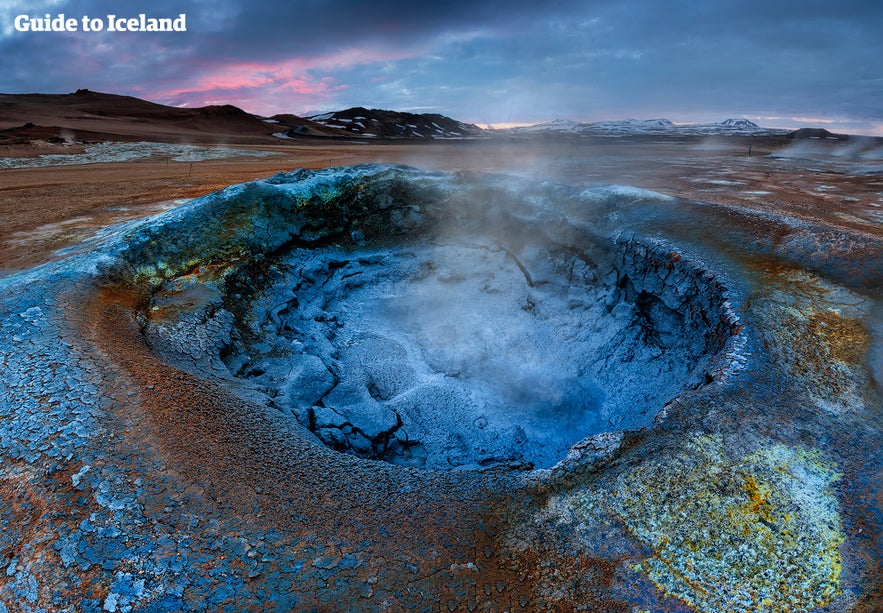
A few kilometers north of the lake, the silhouette of the Krafla Volcano dominates the skyline. Its vascular system provides the greater Myvatn area with an unbelievable variety of natural bathing springs, otherworldly colors, and haunting rock formations like the eerie lava formations of Dimmuborgir, or "Black Forts".
Don’t miss an opportunity to immerse yourself in Iceland’s hot spring culture by visiting the Earth Lagoon. This thermal bath, with a fabulous view perched above the lake, is part of the itinerary of many guided Myvatn tours. It was known as Myvatn Nature Baths until October 2025, and is a popular alternative to the Blue Lagoon, which has similar milky blue waters and skincare benefits.
4. Descend into Iceland’s Fiery Craters
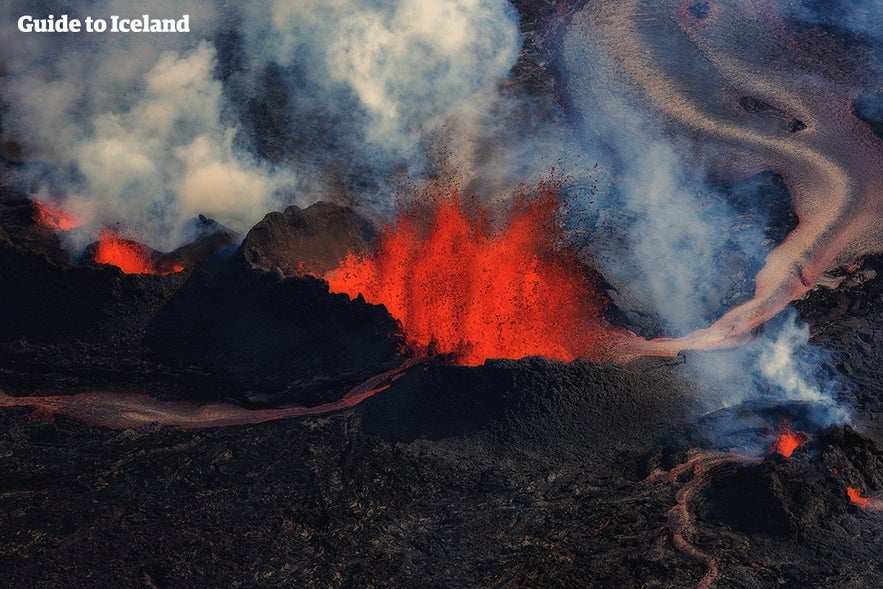
Getting close to the immense volcanic forces that have shaped the island over millennia is an unforgettable experience.
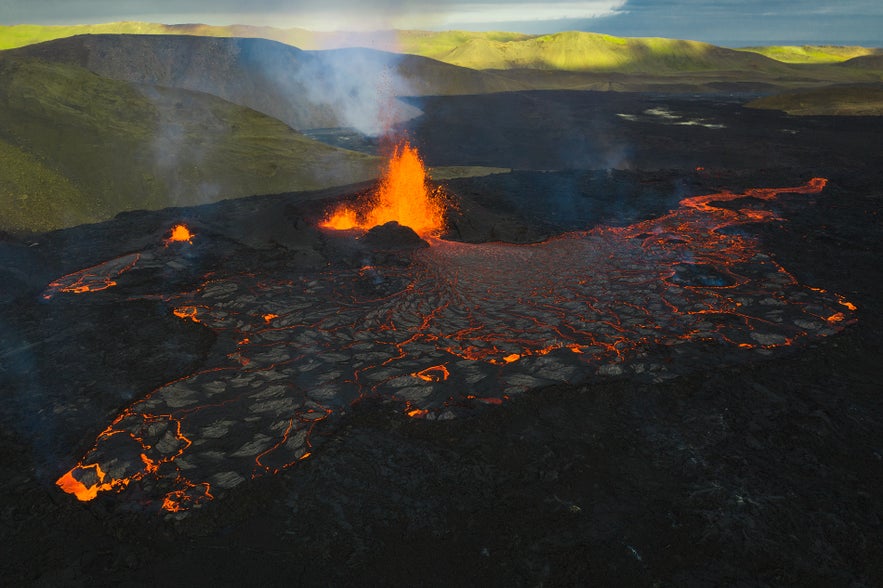
3. Stroll Along Famous Black Sand Beaches
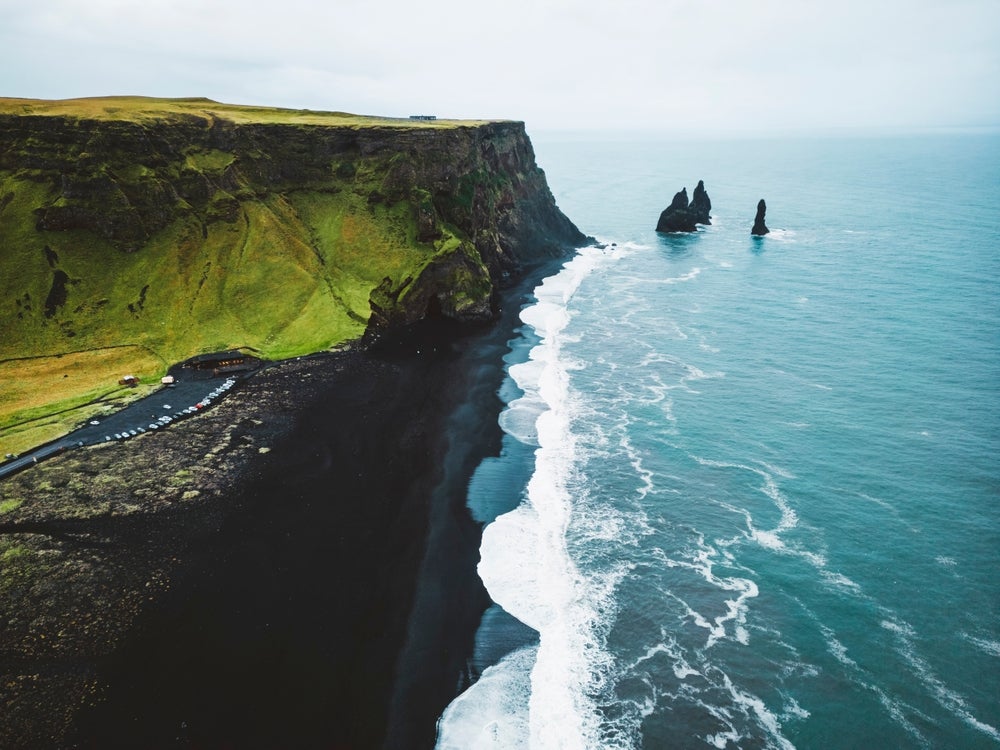 Although sunshine, gentle breezes, and warm weather may be in short supply in Iceland, its beaches continue to attract visitors from around the globe. While they lack the palm trees of their more tropical cousins, they make up for it in dramatic extremes.
Although sunshine, gentle breezes, and warm weather may be in short supply in Iceland, its beaches continue to attract visitors from around the globe. While they lack the palm trees of their more tropical cousins, they make up for it in dramatic extremes.
Close to Vik, Iceland’s southernmost village, lies the world-renowned Reynisfjara Black Sand Beach. Its basalt cliffs, an enormous cave, gigantic rock formations, and the perpetual beating of strong winds make Reynisfjara a majestic place. It can be explored as part of this South Coast Tour from Reykjavik.
Similarly stunning is Djupalonssandur Black Pebble Beach on the Snaefellsnes Peninsula, where visitors can also admire the wreck of a stranded ship from decades past.

Through the Jokulsa a Breidamerkursandi River, countless small icebergs are carried out to sea from the nearby Jokulsarlon glacial lagoon. The waves polish them before they are washed onto the black sands by the high tide.
At dusk and dawn, the light of the low sun illuminates the ice diamonds from a horizontal angle, transforming the black sands into a field of brilliant diamonds. If you want to stroll among as many unique black sand beaches as possible while going at your own pace, the 10-Day Circle of Iceland Self-Drive is your best bet.
2. Fall Head Over Heels for Iceland’s Iconic Waterfalls
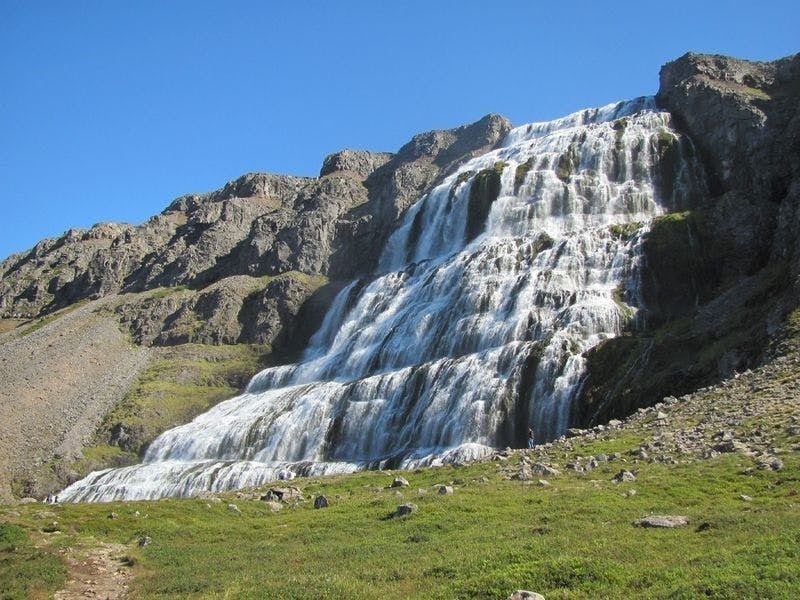
Every travel itinerary in Iceland inevitably includes visiting waterfalls, for good reason. Whether in winter or summer, on a day tour, or a multi-day trip, you cannot miss these natural wonders. You can even go on dedicated waterfall tours to see them!
Allow time to experience the power and pristine beauty of Iceland's waterfalls, yet another of the top reasons to visit Iceland.
- Find out 18 Things To Do & Places to Visit In Iceland
- Read about the Top Things to Do in Reykjavik
1. Escape on an Epic Road Trip
Do you love a road trip? Iceland was made for them. Self-drive tours are one of the top reasons to visit Iceland, if not the most unforgettable way to explore the country. Iceland's roads take you to iconic attractions and immerse you in some of Iceland’s most breathtaking and diverse landscapes.
One of the most accessible road trips is the Golden Circle route. Often completed as a day trip from Reykjavik, it covers some of the most-loved attractions in Iceland. The major stops are Thingvellir National Park, Gullfoss Waterfall, and Geysir Geothermal Area.
The Ring Road route covers the entire main road around Iceland. Embark on this road trip to explore all the regions of Iceland, except the Westfjords and Snaefellsnes peninsula. Or, consider traveling the Diamond Circle, the northeastern alternative to the Golden Circle.
Many visitors choose to road trip around Iceland so they can explore at their own pace. Plus, plenty of meet-on-location activities are perfect for those who are driving.
Looking for more reasons to go? Here’s a condensed version of why you should visit Iceland:
Top 10 FAQs: Why Visit Iceland?
Here are the most frequently asked questions about visiting Iceland.
What makes Iceland's landscapes unique?
Iceland is full of natural wonders. From volcanic craters, ancient glaciers, and hot springs to black sand beaches, waterfalls, and ice caves, the land of ice and fire has it all in one place.
Can I see the northern lights in Iceland?
Definitely! From September to April, Iceland is a top destination for witnessing the aurora borealis. You have a good chance to see the northern lights even without leaving Reykjavik.
Is Iceland good for adventure seekers?
Iceland is the land of outdoor adventure. Whether you visit in summer or winter, you can enjoy glacier hikes, ice cave tours, volcano treks, and whale watching.
Why is Iceland ideal for road trips?
Iceland has excellent road infrastructure, with many itineraries suitable for exploring at your own pace. The Ring Road circles the island, offering access to waterfalls, fjords, and charming towns along the way.
Are geothermal spas really worth it?
Yes! The Blue Lagoon and Sky Lagoon are Iceland's two most famous geothermal spas that combine natural beauty with ultimate relaxation.
What cultural experiences does Iceland offer?
Iceland boasts a vibrant cultural scene, with events like the Iceland Airwaves music festival showcasing local and international talent. Top museums like the National Museum of Iceland and the Settlement Exhibition in the capital explore Iceland's Viking past. Discover Icelandic sagas, local folklore, and Reykjavik’s vibrant arts and music scene.
Is Iceland a good place for nature lovers to visit?
Iceland is a nature lover’s paradise. It’s home to untouched wilderness, abundant wildlife, and over 10,000 waterfalls.
Can I visit volcanoes and glaciers in one trip?
Volcanoes and glaciers are two of the top reasons to visit Iceland. Iceland’s location on the Mid-Atlantic Ridge offers rare access to both year-round.
How safe is Iceland for tourists?
Iceland ranks as one of the safest countries globally, with friendly locals and low crime rates. It is an ideal destination for solo travelers, families, and those seeking peace of mind.
Is Iceland eco-friendly?
Iceland uses 100% renewable energy from geothermal and hydroelectric sources, promoting sustainable tourism. Thanks to its ancient glaciers, abundant rainfall, and natural filtration through volcanic rock, Iceland has some of the purest and most plentiful fresh water in the world.
Your Iceland Adventure Awaits
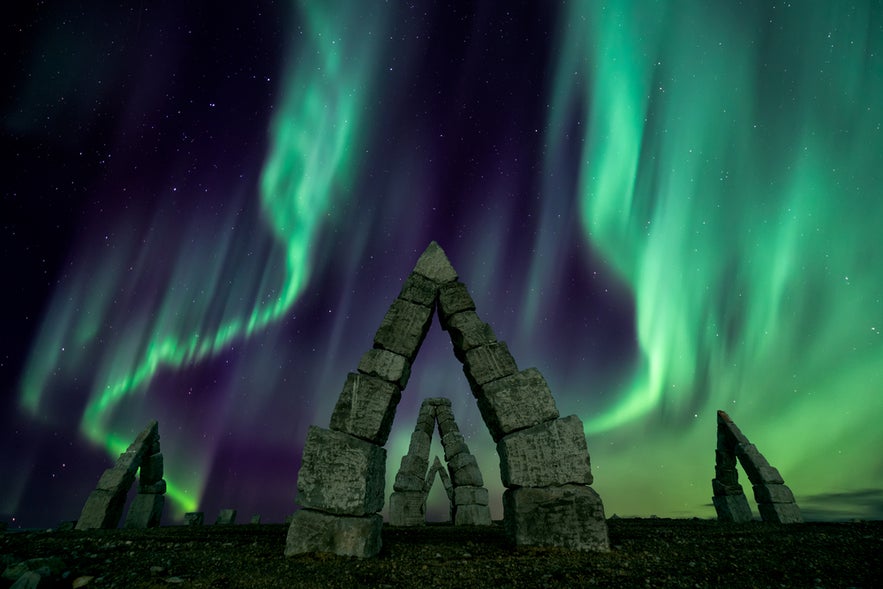 Iceland’s breathtaking landscapes, rich culture, and endless opportunities for adventure make it a must-visit destination for any traveler. Whether you're chasing the northern lights, relaxing in geothermal spas, or exploring volcanic wonders, Iceland promises an unforgettable journey—start planning your trip today!
Iceland’s breathtaking landscapes, rich culture, and endless opportunities for adventure make it a must-visit destination for any traveler. Whether you're chasing the northern lights, relaxing in geothermal spas, or exploring volcanic wonders, Iceland promises an unforgettable journey—start planning your trip today!
Will you visit Iceland this year? Which activities are at the top of your bucket list? Have you been to Iceland before? Is there anything we missed from our list? Share your thoughts in the comment section below!

